Top 5 articles regarding green architecture in 2011
 Due to larger coverage of that niche, we introduced a new category that contains all our news and articles about sustainable architectural achievements and technologies used to accomplish them. In this year’s articles about green architecture we covered completed projects that showcase efforts to reduce carbon emissions and save resources, and we published a few articles how new materials and robots could be used in architecture.
Due to larger coverage of that niche, we introduced a new category that contains all our news and articles about sustainable architectural achievements and technologies used to accomplish them. In this year’s articles about green architecture we covered completed projects that showcase efforts to reduce carbon emissions and save resources, and we published a few articles how new materials and robots could be used in architecture.
Here are the 5 most popular articles published in 2011 (according to our visitors):
5. Green architecture – BMCE Bank, Morocco
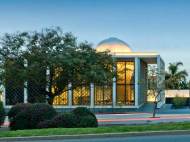 Designed by Foster + Partners, the banks’ contemporary interior is wrapped by a traditional, energy efficient envelope and the design is based on a modular system, which utilizes local materials and craftsmanship to create a striking new emblem for BMCE. The building comprises a concrete frame, with an entrance colonnade and a series of bays repeated on a modular grid.
Designed by Foster + Partners, the banks’ contemporary interior is wrapped by a traditional, energy efficient envelope and the design is based on a modular system, which utilizes local materials and craftsmanship to create a striking new emblem for BMCE. The building comprises a concrete frame, with an entrance colonnade and a series of bays repeated on a modular grid.
It reinterprets elements of traditional Moroccan architecture, combining them with a contemporary interior. The bays are enclosed by glazed panels and 200mm-deep (nearly 8 inches-deep) screens, which provide shade and security. The screens are cut from sheets of stainless steel – a special low-iron mixture that does not heat up in the sun – which are curved to create a geometric design, based on traditional Islamic patterns.
4. Green architecture – Y. S. Sun Green Building
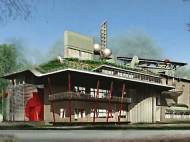 Designed by the Joe Shih Architects, the Y. S. Sun Green Building Research Center (Magic School of Green Technology) of the National Cheng Kung University (NCKU) is the first energy-saving and zero-carbon building in Taiwan and the first green architectural education center in the subtropical zone. It is open for research development as well as promotion work of green technology, and it will serve as NCKU’s international conference center.
Designed by the Joe Shih Architects, the Y. S. Sun Green Building Research Center (Magic School of Green Technology) of the National Cheng Kung University (NCKU) is the first energy-saving and zero-carbon building in Taiwan and the first green architectural education center in the subtropical zone. It is open for research development as well as promotion work of green technology, and it will serve as NCKU’s international conference center.
Although its interior looks quite normal, the exterior of the building is quite quirky because it features various unusual shapes and ornaments. The building consists of three levels above ground one level underground and occupying a total floor area of 4,800 square meters (bit over 51,660 square feet).
3. Green architecture – HGTV Green Home 2011
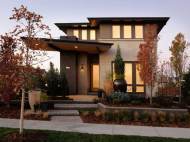 Designed by architect Michael Woodley, who drew inspiration from the Prairie School (an architectural movement that took hold in Chicago at the turn of the century), HGTV Green Home 2011 is a great example of how green a home could be. Its design is generic and suits a family with 2 children, because it was given away as the 2011 prize of HGTV.
Designed by architect Michael Woodley, who drew inspiration from the Prairie School (an architectural movement that took hold in Chicago at the turn of the century), HGTV Green Home 2011 is a great example of how green a home could be. Its design is generic and suits a family with 2 children, because it was given away as the 2011 prize of HGTV.
The home meets rigorous standards for sustainable site development, water conservation, energy efficiency, materials selection, indoor environmental quality, proximity to transit and existing infrastructure and innovative design.
2. Green architecture – Wolgan Valley Resort & Spa, Australia
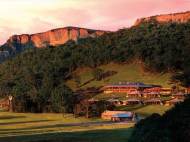 Designed by Turner & Associates Architects, Emirates’ Wolgan Valley Resort & Spa is a luxurious looking and sustainable resort located on Australia’s Great Dividing Range and borders the Blue Mountains World Heritage Area. Aside the beauty of nature surrounding Wolgan Valley Resort & Spa, the luxury accommodations designed by are carbon neutral and feature various features of green architecture.
Designed by Turner & Associates Architects, Emirates’ Wolgan Valley Resort & Spa is a luxurious looking and sustainable resort located on Australia’s Great Dividing Range and borders the Blue Mountains World Heritage Area. Aside the beauty of nature surrounding Wolgan Valley Resort & Spa, the luxury accommodations designed by are carbon neutral and feature various features of green architecture.
It has a lot of natural materials in its architecture. The guest buildings located around the central homestead building, and the primary materials used in them are mostly natural local stone, Australian hardwoods and corrugated iron. The resort is built to blend into the natural landscape with the least impact to its surrounding environment.
1. Green architecture – Dali Museum, St. Petersburg, Florida
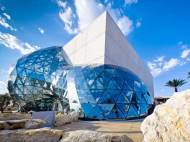 Designed by HOK, the new Dali Museum doubles the size of the original 1982 Dali Museum, a one-story warehouse. Exhibits include oils, watercolors, sketches, sculptures and other works from a 2,140-piece permanent collection. It is inspired both by Dali’s surrealist art and by the practical need to shelter the collection from the hurricanes that threaten Florida’s west coast.
Designed by HOK, the new Dali Museum doubles the size of the original 1982 Dali Museum, a one-story warehouse. Exhibits include oils, watercolors, sketches, sculptures and other works from a 2,140-piece permanent collection. It is inspired both by Dali’s surrealist art and by the practical need to shelter the collection from the hurricanes that threaten Florida’s west coast.
The building is more than 22.8 meters (75 feet) tall and is decorated by 1,062 unique, triangular glass panels. A 17.7 meter-high (58-foot-high), right-angled, Euclidean “treasure box” with thick concrete walls protects the art. This unfinished concrete box is disrupted by a flowing, organic, triangulated glass “Enigma” (also the name of a 1929 Dali painting) that opens the museum to the bay and sky while forming an atrium roof that draws in natural daylight.









Leave your response!